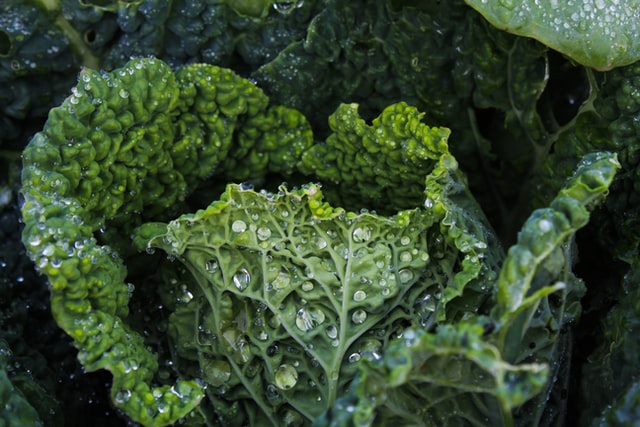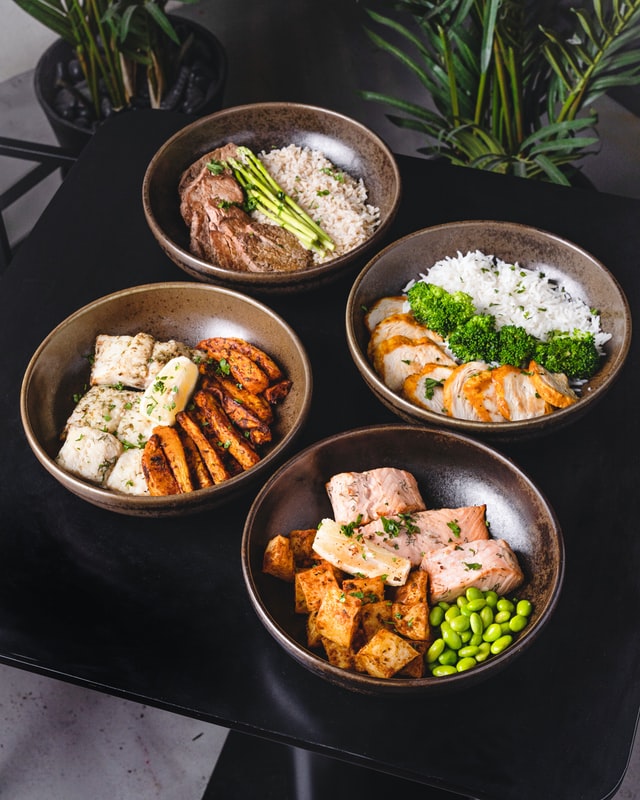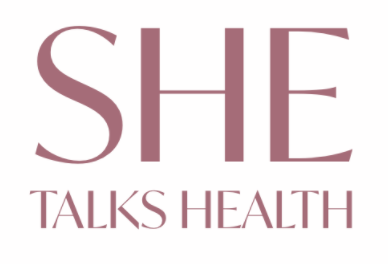
Did you know there are certain nutrients that can help during different phases of the menstrual cycle?
In fact, as cycling women we change dramatically throughout the month. Our brain changes, our nutrient needs changes, our self care practices, exercise routines and way we work can all be optimized for our cycles. So what are the key nutrients needed for a healthy menstrual cycle?
Let’s start with the three food ideas that apply to all phases of the cycle:
1. Blood sugar balance is key for optimal gut and liver function as well as avoiding the stress that blood sugar swings place on the body. Gut & liver function are critical for key hormone function and balance (insulin, cortisol, estrogen, progesterone, and testosterone.) But how do we keep our blood sugar balanced? By consuming nutrient dense foods that consist of protein, complex carbohydrates, and healthy sources of fat. These three macronutrients are essential for everything from sex hormone production to proper liver function. I’m not a big believer in counting macros because
A. who has time for that?
B. counting my food on a scale does not sound appetizing
C. seems like a great way to become over critical about portions
You can start with 1/4 Protein, 1/2 Fiber Rich Non Starchy Veggies like broccoli, asparagus etc. and 1/4 of the plate with complex carbohydrates like rice or sweet potato. You’ll want to make sure that you get adequate amounts of healthy fats in there as well.
Some women will need more protein, some will need more fat, etc. it’s all about listening to what YOUR body needs!
You can also check my article out about blood sugar balance here!
2. Eating in a calm environment and chewing food properly should be on every woman’s list of priorities when it comes to optimizing her health. When we don’t do this we compromise our digestive system’s ability to work well in the absorption of nutrients needed to build and detox hormones. Remember, it’s not just what you eat but how well you absorb! When we rush through our meals, not chewing properly we really halt our ability to absorb our food!
3. Following an Anti-Inflammatory Lifestyle I know, I know, I love potato chips and chocolate chip cookies as much as the next gal but honestly my period doesn’t so it’s not my go-to. That’s not to say I don’t indulge every so often but I try to eat a mostly anti-inflammatory diet. This might look different for different women depending on how their bodies are reacting to foods. At one point in my health journey I had over 20 food sensitivities including ones to apples & kale! However, in general I’ve found that when we ditch the processed foods high in refined vegetable oils, sugars and additives it dramatically lowers our inflammation. Additionally the majority of women I work with are extremely sensitive or inflamed by foods containing : gluten and or wheat, cow’s dairy, GMO corn and processed soy. We can also focus on adding anti-inflammatory foods including lots of variety of vegetables, organic berries and even incorporating herbs like ginger and turmeric into our cooking. Beyond that, when it comes to determining what is anti-inflammatory for YOU I recommend working with a trained professional to help you identify any food triggers.
Now that we have the basic’s down, let’s dive into the 4 phases and what we can do to optimize each with the food on our plates!
SHE TALKS TIP: Most animal protein has fat in it. If you are eating plant based, avocado, olive oil and coconut oils can add that lovely fat content to keep you satiated & build hormones

Cycling Syncing: The What and How
Cycle Syncing can be a really helpful way to optimize your cycle. It works similarly to seed cycling and helps to ensure your body is getting all the nutrients it needs to support the optimal balance of hormones throughout each unique part of your cycle. What’s important to know here is that throughout the month women go through lots of ebbs and flows of their hormones which is why our focus, energy, moods and symptoms can change so dramatically through the month. This is why last week you were feeling sexy as hell, energized to full max, and confident with a capitol C —and then this week you are bloated, hangry and want ALL the chocolate. We can thank our hormones for that massive shift! Ok so let’s dive into how we can support our 4 phases with food! (p.s. more blogs coming out soon about supporting your body with exercise, work and self care in each phase of your cycle!)
PHASE 1: FOLLICULAR PHASE (BLEEDING)
You could call the period portion the follicular phase the “menstrual phase,” but technically menstruation marks the beginning of the follicular phase. For the purposes of dividing things evenly I will say Follicular Phase (Bleeding) and Late Follicular Phase.
Throughout the Follicular phase, your brain releases hormones that both stimulate the production of eggs in your ovaries while also increasing estrogen production.
During Follicular Phase (Bleeding) it’s helpful to eat foods that will lower inflammation for a peaceful period, good communication between the ovaries and brain and replace nutrients lost during menstruation!
Lowering Inflammation: Ditch the processed foods and include anti- inflammatory herbs like ginger & turmeric. (look above for more details)
Replacing Nutrients: during your bleeding phase you lose a lot of iron, zinc and other key nutrients so it can be helpful to eat zinc and iron rich foods as well as Vitamin C & B Vitamins to help to promote cell production and restoration of nutrients. So many of my clients who have heavy bleeds are anemic!
Iron Rich Foods: liver, beef, chicken, turkey, egg yolks, mackerel, trout, pork chop. Plant Based: sources are whole grains, legumes, nuts, seeds, dried fruits, and green, leafy vegetables, which can be paired at the same meal with vitamin C-rich foods such as citrus, bell peppers, broccoli, and tropical fruits to boost iron absorption.
Vitamin C Rich Foods: acerola cherries, rose Hips, guavas, kiwi, grapefruit, yellow, green red bell peppers, cantaloupe, kale, broccoli, citrus fruits, oranges
Vitamin B Rich Foods: clams, salmon, tuna, turkey, fish, potatoes, starchy vegetables, leafy greens, liver, nuts, peas, eggs, mushrooms, oats, soy beans, broccoli, brussel sprouts,
Zinc Rich Foods: oysters, beef, crab, lobster, Turkey, chicken, eggs, pork, cashews, chickpeas, oatmeal, almonds, beans, lentils, pumpkin seeds
TIP: if you are super dropped in and intuitive with your body you might find that you are naturally inclined to eat rich bone broths, soups and stews at this time of your cycle.
PHASE 2: LATE FOLLICULAR
During the Late Follicular Phase when estrogen, LH, FSH are all rising, the body is preparing to ovulate. You may find your energy returns, your brain clears up and your creativity is sparked! Along with this increased energy typically comes a suppression of appetite. You may find it most helpful to eat meals with protein, high fiber antioxidant rich fruits and veggies with a side of fermented foods.
- Fiber: VEGGIES, whole grains, beans, lentils, nuts, seeds, avocado, berries, apples
- Antioxidants: Berries, broccoli, sweet potatoes, carrots, citrus, passion fruit, cauliflower, brussels sprouts, pomegranate
- Fermented Foods: Raw & fermented vegetables, yogurt, kefir, miso, tempeh
- Cruciferous Veggies: Brussels sprouts, cabbage, cauliflower, kale, bok choy, broccoli sprouts, broccoli
PHASE 3: OVULATORY
At ovulation our Estrogen, LH and FSH are at their highest. During this time you may continue to feel this drop in appetite. This phase is similar to the one before it however as we start to transition into this phase some women find it helpful to start to incorporating foods that will support estrogen detoxification. Cruciferous veggies like broccoli sprout, brussels sprouts, kale, cabbage, and broccoli are all excellent choices to support this estrogen detoxification process as are carrots!
PHASE 4: LUTEAL PHASE
During the Luteal Phase of the cycle, which occurs directly after ovulation your ovarian follicle has just released its egg. That ovarian follicle then turns into a structure called the Corpus Luteum, which begins releasing progesterone to build and thicken the uterine lining in preparation for pregnancy. If the egg is not fertilized, the corpus luteum disintegrates at the end of this phase causing a decline in progesterone and estrogen—and the cycle starts all over again. This is the part of the cycle women tend to dread most where PMS kicks in if hormones & nutrients are not balanced.
We can support this through food by continuing to eat cruciferous veggies and carrot to detox any extra estrogen present in order to keep a healthy balance between progesterone & estrogen. It’s also helpful to eat foods rich in Vitamin C, B6, Magnesium, and Zinc that will support Progesterone and the Corps Luteum. The high metabolism of the Corpus Luteum demands nutrients such as cholesterol, B-vitamins, CoQ10, Vitamin D, iodine, magnesium, zinc and selenium!
Vitamin C rich foods: like oranges, peppers, grapefruit, strawberries and broccoli
Vitamin B6 rich food: like salmon, bananas, chickpeas, tuna, roasted turkey, ground beef, winter squash and beef liver
Zinc Rich Food: The best bioavailable sources of zinc are from shellfish and organ meats. You can also get it from beef, pumpkin seeds, cashews and chickpeas.
Magnesium Rich Food: My favorite way to get Magnesium in is through Epsom salt and dark chocolate – hello Self Care Sunday! But you can also get magnesium from dark green vegetables, cashews, brazil nuts, legumes, brown rice, avocado, dried apricots, almonds. Studies show that magnesium drops after ovulation which can definitely be a reason why you feel crampy and anxious.
Selenium Rich Food: You can get adequate amounts of selenium from just 1-2 Brazil nuts a day!
SHE TALKS TIP: If you are experiencing PMS and also drinking TONS of coffee, try switching to green tea for one cycle and see what happens! Studies show that green tea helps to detox estrogen where as coffee may increase it.
If you’ve been doing all the food things for a while and your hormones are still all of the place that’s where I always say: GET TESTED! You can work on your hormones with us at SHE Talks Health by clicking the link below.
